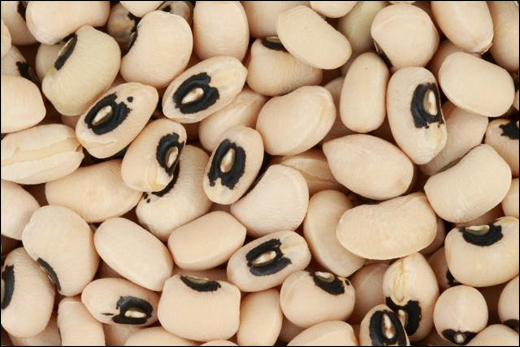Cowpeas/ Vigna catiang – Ayurvedic Properties, Practical Uses & Parts Used
Abstract
Vigna unguiculata (L.) Walp., commonly known as cowpea or black-eyed pea, is a nutritionally rich legume recognised for both its dietary and therapeutic significance. In Ayurveda, it is known for its strengthening and nourishing qualities, making it suitable for a variety of health conditions. The plant is adaptable to diverse climates, especially arid and semi-arid regions. Its seeds are rich in protein, vitamins, and antioxidants, contributing to overall health. Traditional knowledge and scientific research increasingly support their role in managing lifestyle and metabolic disorders. This article presents an Ayurvedic and scientific overview of this valuable plant.

Introduction
Cowpea (Vigna unguiculata), commonly referred to as a highly nutritious and palatable legume, holds great significance in both traditional diets and Ayurvedic medicine. It is rich in plant-based protein, so it is often called the “poor man’s meat” due to its affordability and nutritional value, especially in regions where access to animal protein is limited. In Ayurveda, cowpeas are identified as Rajamasha and are esteemed for their nourishing and strengthening properties. Unlike many legumes, they do not aggravate Kapha dosha, which is beneficial for individuals with Kapha-dominant constitutions. On the contrary, cowpeas are mildly diuretic, support healthy urinary function, and aid in maintaining proper gastrointestinal balance. Their vermicidal action helps eliminate intestinal parasites, while their high nutrient density promotes tissue nourishment and energy.
Scientific Classification
- Kingdom : Plantae
- Order : Fabales
- Family : Fabaceae
- Genus : Vigna
- Species : Vigna unguiculata (L.) Walp.
- Synonym : Vigna catiang
Ayurvedic Synonyms
- Rajamasha
- Mahamasha
- Chapala
- Bala
Vernacular Names
- Bengali: Ghangra, Kulattha, Kalaya, Barbati
- English: Cowpea, Black-eyed Pea, Horse Gram, Asparagus Bean, Catjang, Catjang Cowpea, Chinese Long Bean, Clay Pea, Cream Pea, Crowder Pea, Pea Bean, Purple-Hull Pea, Southern Pea, Sow Pea, Yard-Long Bean
- French: Dolique Asperge, Dolique Mongette, Haricot Asperge, Haricot Indigène, Niébé, Pois à Vaches
- Ghana: Adua, Ayi, Tipielega, Tuya, Saau
- Gujarati: Kalathi, Kulathi
- Hindi: Lobia, Kulathi, Kurathi
- Indonesian: Kacang Bol, Kacang Merah, Kacang Toonggak, Kacang Béngkok
- Kannada: Alasabde, Alasund, Huruli, Hurali
- Kashmiri: Kath
- Malayalam: Mudiraa
- Marathi: Alasunda, Chavali
- Nigeria: Wake, Ezo, Nyebbe, Ngalo, Azzo, Dijok, Alev, Arebe, Lubia, Mongo, Ewa, Akedi, Akoti
- Portuguese: Feijão-Espargo, Feijão-Fradinho
- Punjabi: Lodhar
- Sanskrit: Mahamasah, Rajamasah, Khalva, Vardhipatraka
- Spanish: Costeño, Frijol de Costa, Judía Catjang, Judía Espárrago, Rabiza
- Swahili: Kunde
- Tamil: Kaattuulundu, Karamani
- Telugu: Alasandalu, Kaaraamanulu
- Urdu: Gawara, Gawar ka Beej
Habitat
It originated in Africa and is now cultivated widely across the globe, including in countries such as Nigeria, India, Central America, China and various parts of Africa.
Morphology
Vigna unguiculata is an annual herbaceous legume characterised by its dark green leaves that are sparsely pubescent. The flowers exhibit a wide range of colours, including yellow, pink, white, purple, and blue. The plant features long peduncles measuring between 20 and 50 cm, which bear both flowers and seed pods. The pods themselves vary significantly in size, ranging from 10 to 100 cm in length. The seeds are reniform (kidney-shaped), measuring approximately 5–6 mm in length, 3–4 mm in width and 2–3 mm in thickness. They are compressed with a smooth, polished and hard testa that is typically brown in colour.
Varieties
There are 3 varieties of Cowpeas based on the colour, which are as follows:
- White
- Black
- Red
Classical Categorisation
- According to Bhavaprakasha Nighantu : Dhanya Varga (Grain category)
- According to Kaiyadeva Nighantu : Dhanya Varga (Grain category)
- According to Dhanvantari Nighantu : Suvarnadi Varga
- According to Raj Nighantu : Shalyadi Varga
Ancient Verses
राजमाषो गुरुः स्वादुस्तुवरस्तर्पणः सरः ॥ रुक्षो वातकरो रुच्यः स्तन्यो भूरिबलप्रदः ।
(Bhavprakash Nighantu Dhanya varga 44-45)
According to the above shloka, Cowpeas are heavy and dry in nature, have a sweet and astringent taste. It improves taste, increases intestinal mobility and increases breast milk and strength. It increases vata dosha.
Ayurvedic Properties
- Taste (Rasa) : Sweet (Madhur), Astringent (Kashaya)
- Physical property (Guna) : Heavy (Guru)
- Effect on tridosha : Balance Pitta and Kapha dosha
Therapeutic Properties
- Pitta-Kapha Shamaka (balances Pitta and Kapha)
- Balya (strength-promoting)
- Sarak (increases intestinal mobility)
- Satnaya (increases breast milk)
- Increases strength
- Improves taste
Systemic Actions
Digestive System : Improves appetite and aids digestion
Chemical Composition
- Palmitic acid
- Stearic acid
- Linoleic acid
- Linolenic acid
- Oleic acid
- Vitamin C
- B-complex vitamins
- Daidzein
- Genistein
- Glycitein
- Hydroxybenzoic acids
- Tannins
Practical Uses
- For General Weakness : Boiled cowpeas mixed with ghee and jaggery improve strength and stamina.
- For Anaemia : Regular intake of sprouted cowpeas helps in managing iron deficiency.
- For Worm Infestation : Powdered cowpea seeds mixed with black salt can be taken with warm water.
- For Skin Health : Cowpea flour mixed with turmeric is used as a face mask for acne and pigmentation.
Part Used
Seeds
Conclusion
Vigna unguiculata (cowpea) serves as both a nutritious food and a valuable medicinal plant in traditional and modern systems of health. Its wide adaptability, rich nutrient profile and therapeutic actions make it ideal for inclusion in health-promoting diets and in the management of lifestyle disorders. Continued research and clinical validation can enhance its role in preventive and therapeutic nutrition.



